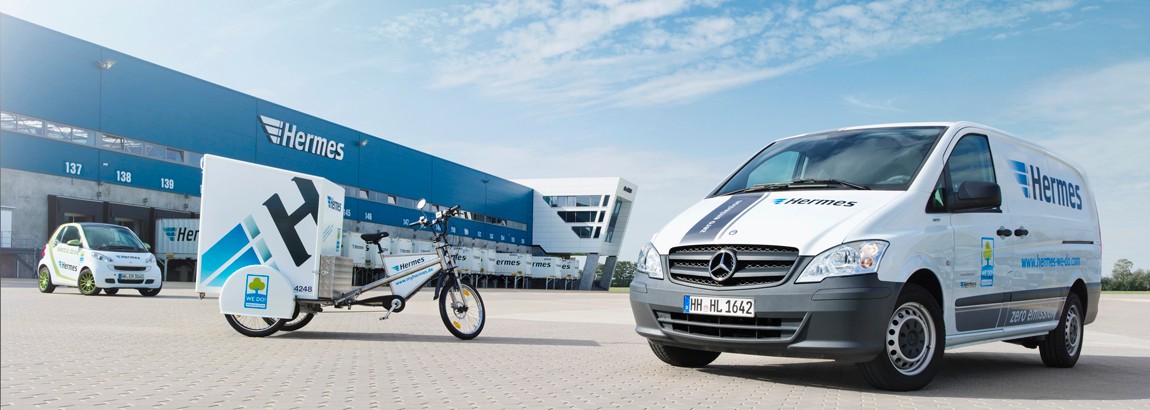The Hermes fleet: Step on the gas and save CO2
About 1,500 Hermes vehicles are in service for the Hermes group every day, operated either by the company itself or its contractors. They must be robust and enable quick loading and unloading, but in addition to economic factors, environmental protection is also important on two levels. First, optimal route planning is needed, so as to avoid circuitous trips and empty runs as much as possible. Second, the vehicles themselves are important.
Hermes has been pioneering efforts to continually increase the efficiency of vehicle technology since 1992 – in cooperation with renowned automobile producers. Since then, collaborative research on alternative drive technologies, independent of any one manufacturer, and trials of this technology in everyday use have been underway. For example, in the field of electro-mobility, Hermes, a long-time partner of Mercedes-Benz, tested the world’s first electrically driven delivery vans in Berlin and Hamburg. Twenty Vito E-CELL vehicles – quiet and completely pollution-free – were subjected to four-year trials making real-world deliveries. But Hermes also prominently uses electric Renault Kangoo, Fiat 500 and Smart vehicles in its fleet.
This goal to meet the most modern standards applies to the entire Hermes group. Trucks that are used by Hermes Transport Logistics primarily for fast overnight deliveries are used for a maximum of two years and are then swapped out for newer, more environmentally efficient models. All vehicles also fulfil the high requirements of the EURO 5 international pollution standard and most are equipped with micro-hybrid technology, that is, with fuel-saving auto start-stop features. The Hermes Logistik Gruppe Deutschland exchanges its vehicles – all of which are least – at least every three years to ensure that the most modern emission standards are met and the most efficient engine technology is used. However, today it is already possible to see what the future of alternative drive will look like – in London, where Hermes has been making all of its deliveries in the British capital 100% emissions-free since late 2014. Hermes was the first parcel delivery service in London to completely modernise its urban delivery service and now operates the largest commercial electric vehicle fleet in major European city, made up of 44 Renault Kangoo Z.E. vehicles charged with electricity from renewable sources. This saves 146 tonnes of CO2 over conventional models. The vehicles also require 40 percent less parking space. Furthermore, in the German capital, Hermes has been an important partner in the showcase project Berlin-Brandenburg, supporting it by testing it electrified prototypes of sprinter class vehicles in real-world deliveries in the Berlin metropolitan area, among other things.
Despite these successes, Hermes of course continues to think ahead in other directions as well. For instance, since 2008, Hermes has used 20 bivalent natural-gas powered delivery vans that practically generate no particle emissions. Fuel cell technology is also being used: in Berlin, Hermes is participating in one of the world’s largest fuel cell demonstration projects.
From 40-tonne vehicles to delivery bikes: Hermes is sustainably on the go. The bicycle has an electric drive and is used primarily in urban centres.
